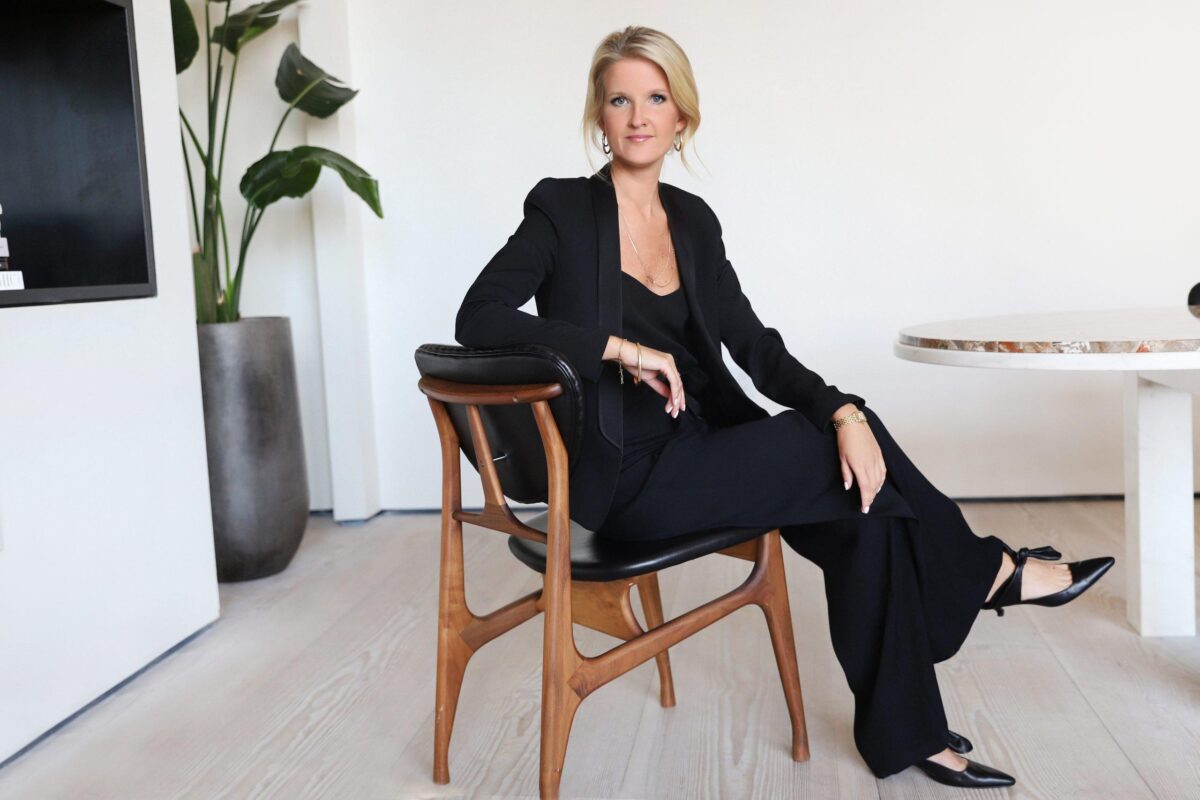The pandemic forced most art sales to be moved online, which has allowed the industry to innovate and flourish in an exciting new direction. Emilia Börjesson founded Placemeant, an organization that is helping artists navigate this renewed space by giving voice and visibility to the artists of our time.
As we continue to inch our way back to “normalcy,” artists are seeking partnerships, pop-ups, and other connections to the community they’ve found online. Founder Börjesson is aware of this shift, eager to expand Placemeant’s portfolio of artists by offering these artists experiences and collaborations across various industries.
Emilia Börjesson’s Journey Into The Art World With Placemeant

“Placemeant operates at the intersection of art, culture, and brands,” Börjesson said. “We help artists reach their audiences through positioning, brand building, art dealing, and full-service representation – all with a social-first digital approach.”
When COVID-19 first began to hit last year, creative industries were sent into a state of shock.
While artists initially didn’t know how they were going to make things work, the art world quickly pivoted, adjusting sales to online and making social media presence more relevant than ever before. Börjesson helps artists adjust to this space as it continues to thrive.
Börjesson hasn’t always worked in the art industry, but she’s certainly always had an interest in the sector. The entrepreneur visited museums and galleries as a child, exposing herself to a world that she never wanted to leave.
“I understood that art was not only an interest, but my calling,” Börjesson said. “From those young moments, my determination and passion towards pursuing a career in the art industry began to evolve very organically.”
Before she got professionally involved with the art world, Börjesson gained her experience from fashion and branding in general. After getting her feet wet by working with a variety of brands across several different industries, Börjesson started getting approached for consultancies.
“From there, the idea of Placemeant was born,” Börjesson said. “I felt the urge to create a consultancy where I could connect my knowledge and resources on the same platform. It was a challenge, but I quickly learned if there is a will, there is always a way.”
How Placemeant is Helping Artists Navigate The “New Normal”
Börjesson founded the consultancy in 2016, the beginning of an exciting new journey of collaborations.
“Through strategic ‘placemeants,’ we connect the dots for emerging and established artists through meaningful partnerships, collaborations, and content development, as well as physical and digital experiences,” Börjesson said. “We also help art collectors, brands, and businesses through our services in curation, positioning, advising, and brand consulting.”
It was Börjesson’s experience with brand consulting in general that opened her eyes to artists and the support they are increasingly in need of.
“It’s not just about traditional gallery representation anymore,” Börjesson said. “The evolution of the digital era offers a great opportunity to reinvent and implement new fundamentals of selling, creating visibility, and raising awareness around artists and their work.”
Through her research and observations, Börjesson also noticed the new audience emerging in the post-pandemic art world. While most people interested in art before were more likely to be involved in the industry somehow, this new way of doing things has opened accessibility up to audiences who don’t necessarily fit the mold.
“This new audience doesn’t necessarily go to art fairs or galleries,” Börjesson said. “Instead, they purchase art through Instagram, digital platforms, and word of mouth. This market is rapidly growing, and I was drawn to this business opportunity I recognized.”
The Future of The Art World
These new opportunities are exciting in 2021, but they’re also incredibly instrumental when it comes to how the art world will be perceived for decades to come, and how it’s going to operate moving forward.
Börjesson recognizes the pandemic as a true reset for the art world. Despite all of the struggles that have come along with this past year of adjustment, this transition is making way for a more streamlined industry of creativity and innovation.
“Now, there are new conversations about how to buy art,” Börjesson said. “The pandemic has also established more transparency in the art market with online catalogues and viewing rooms available to anyone.”
With the increase of online sales also came the increase of NFTs, digital assets that represent the work of artists in a way that is supposed to help them remain in control.
“I think we have only seen the beginning of this digital transformation,” Börjesson said. “NFTs are definitely here to stay in some form, but I think the initial hype has somewhat passed in the art industry. However, the phenomenon has created great creative and financial potential. It will be interesting to see how it all plays out.”
Beyond these technological adjustments, this new way of doing things has also made more room for diversity. Artists were forced to band together and form community more than ever before, which has resulted in a lot more support and acceptance throughout the industry.
“Buyers are more focused on purpose by supporting communities and good causes with their art choices,” Börjesson said. “There has definitely been a positive shift, and I think we have only seen the beginning of this change.”

